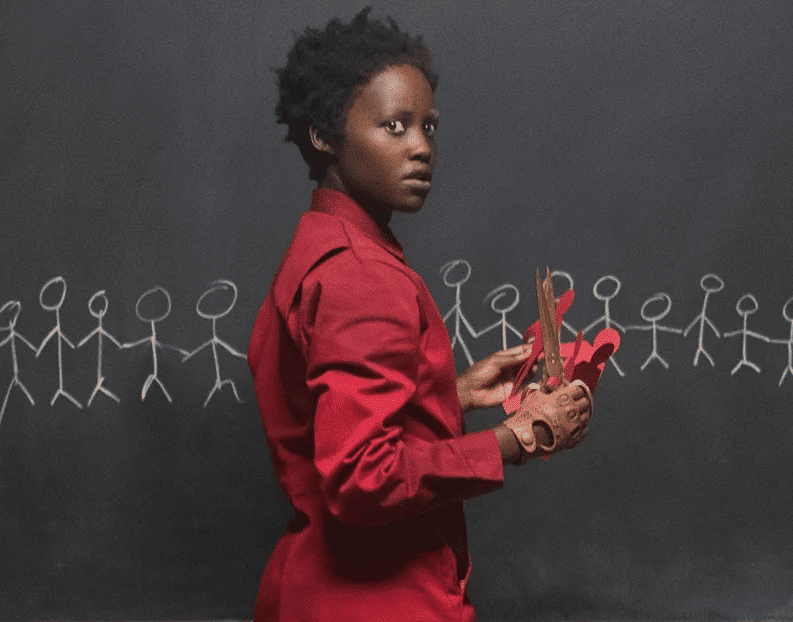By Guest Contributor Grace Anderson
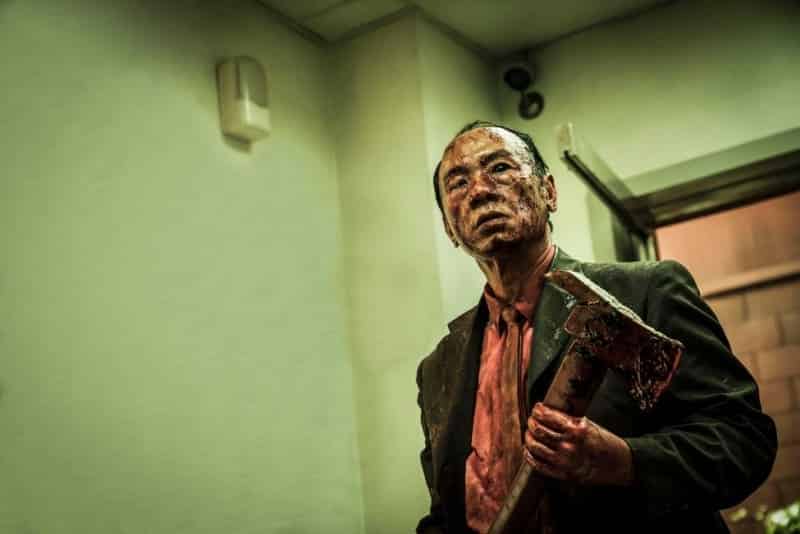
Have you noticed that horror movies have been becoming more political these days? With iconic filmmakers such as Jordan Peele and Eli Roth leading the trend, double meanings and social allegories have become more and more prevalent in the horror movies of the past decade. The 2010s were an extremely influential era in social horror. From the commentary on liberal racism in Get Out or the criticism of the upper class in Knives Out, it seems like every 2010s horror had something to say. Here we will explore some of the major social issues of the 2010s and how they were handled in 2010s horror, as well as what the future of the genre has in store.
A History of the Societal Monster
Horror has been a vehicle for social commentary since its inception. Old Hollywood horror movies, for example, embody many of the societal fears of the 1950s. Cold War nuclear panic dominated this era of horror, particularly in the flourishing monster movie genre. The Beast of 20,000 Fathoms (1953) and the iconic Godzilla (1956) deal with the catastrophic effects of nuclear radiation and the potential monsters that this may create. Sci-fi horrors such as When Worlds Collide (1951) and War of the Worlds (1953) Tackle the fears of an impending nuclear apocalypse through science fiction allegories. 1950s Horror also often explore themes of science gone awry. The Fly (1958) and Bride of the Monster (1955) feature scientists who are incompetent, irresponsible, or just plain evil, reflecting both the fears of the atomic age and societal anxieties around the rapidly developing technology of the era.
The 1970s brought in a new era of social commentary in horror. The forerunners of the slasher genre such as The Texas Chainsaw Massacre (1974) and Halloween (1978) were brought on by increased cultural awareness of violent crime and inspired by highly sensationalised serial killers of the time, such as Ted Bundy and Son of Sam. 1970s horror also satirised the long-standing gender roles that had begun to unravel. The Stepford Wives (1972) explores seemingly perfect suburbia where women are programmed like robots to be perfect housewives. This reflected the shifting societal attitudes towards the “perfect housewife” archetype of past decades, which was becoming increasingly stale and outdated as more and more women entered the workforce.
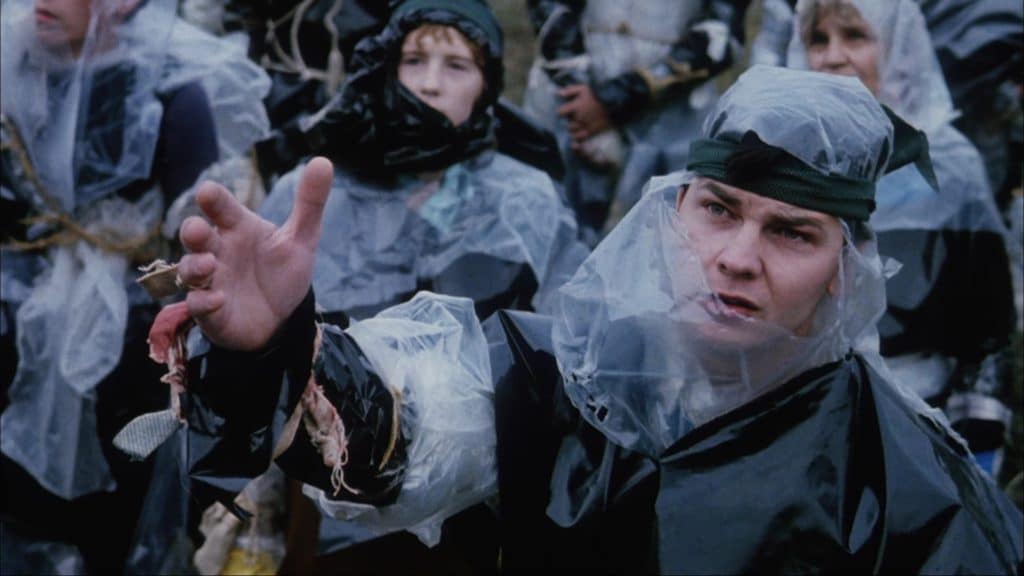
With the 1980s came a new horror sweeping through society: the AIDs crisis. Many of the quintessential 80s horror movies involve a virus or botched science experiment that results in disfigurement or invasion of the body. In John Carpenter’s 1982 remake of The Thing, a group of scientists unearths a creature that can take over its victim’s body and assume its identity. The Thing can appear in anyone and go unnoticed in everyday society, much like the AIDs virus itself. The Carrier (1988) follows a protagonist who contracts an unidentifiable disease that has no visible effect on him. Any object he touches becomes infected and absorbs the bodies of any person that comes into contact with it. This is a much more direct allegory of the AIDs virus than previous examples. In short, horror movies have always held up a mirror to the social fears and anxieties of their time. This legacy has carried on well into the twenty-first century and into the modern age.
Societal Monsters of The 2010s
The legacy of the societal ills that inspired the horror movies of past decades continued well into the twenty-first century. While the AIDS crisis and nuclear panic were distant memories in the eyes of the movie-watching public, some of the themes remained. Themes of wealth inequality, feminism, and environmentalism are just as prominent in 2010s horror as they were in the mid-twentieth century, but with a fresh, modern spin. New themes emerged from this decade as well, such as social media. With rapidly developing technology and growing political and social unrest, the 2010s had no shortage of sociality fears to manifest in our horror movies. Here are three examples of modern social issues tackled in 2010s horror movies.
The Monstrous Elites
Following the 2008 financial crisis, the general public has been becoming increasingly aware of class devices and wealth inequality. As with previous decades, this shift in societal awareness made its way into our horror movies. These movies often involved corrupt elite, violently wreaking chaos on the lower classes or, more profoundly, a vengeful lower class forcing us to examine our privilege and reflect on how our actions may have impacted the less fortunate.
Ready or Not (2019)
This horror comedy follows Grace, a former foster child engaged to the son of an ultra-wealthy business owner. Upon meeting her fiancé’s family she discovers they have an odd tradition of playing a game on wedding nights. The movie devolves into a deadly ritual game of hide and seek where Grace has to kill or be killed to avoid being sacrificed to a Satanic deity. This movie contains commentary about the wealthy causing harm to the lower classes for personal gain. Grace, coming from a disadvantaged situation such as foster care, makes her vulnerable to exploitation. The inclusion of the Satanic ritual plotting is an allegory of how the ultra-wealthy “sacrifice” the underprivileged for their selfish gain.
US (2019)
US is the second film written and directed by the then-up-and-coming Jordan Peele. Following in the footsteps of Peele’s debut film Get Out, US is rife with allegories and social commentary. The story follows Adelaide, her husband, and her two teenage children as they vacation in California. When a horde of murderous doppelgangers known as the Tethered rise up from underground tunnels and terrorise their above-ground counterparts, Adelaide is forced to confront her mysterious past. US is a bit different from other examples of class commentary in horror. Instead of aiming at the ultra-wealthy elite, it holds up a mirror to the average middle-class American. The Tethered represent the poor and underprivileged class of America. They look and feel just like we do, but are forced to spend their lives without the basic comforts and necessities we take for granted. They are also expected to stay hidden away from the view of the average person, leaving them in wilful ignorance. By the big reveal at the end of the movie, you are left unsure of who the real villain is. Is it the disadvantaged Tethered or the middle-class citizens who refuse to see their struggles? US makes you reflect upon your own privileged life and empathise with those who may be less fortunate than you.
Political Monsters
The 2010s was a decade rife with political turmoil. Whether it was LGBTQ+ rights, separation of church and state, or the extremely divisive 2016 election, there was always some political issue at the forefront of the minds of the public. Not only that, but with the rise of social media and clear biases in our news cycles, people were becoming increasingly aware of the corruption and greed running rampant in our political spheres. People felt that they could no longer trust their government. As with every deep-seated societal fear, the horror of the time reflected that. More and more 2010s horror movies included themes of insidious politicians and other people in positions of authority as well as satirising fatal flaws in even seemingly progressive political ideologies.
Red State (2011)
Red State is an independent film following three teenage boys as they meet up with a woman they met online hoping for a sexual encounter, only to get taken by an extremist Christian cult that kidnaps those they view as immoral or undesirable; their victims are then tortured and killed as punishment for their perceived “sins”. The cult in this movie, though fictional, shows obvious parallels to real-life extremist religious groups such as the Westbro Baspist church, which drew in a lot of media attention for protesting at LGBTQ+ events during the fight to legalise same-sex marriage in the early to mid-2010s. However, there are also deeper themes in this movie about the separation of church and state and the corruption of religion. The leader of the cult in Red State is a charismatic, manipulative preacher, not unlike some of the religious leaders and politicians of real life.
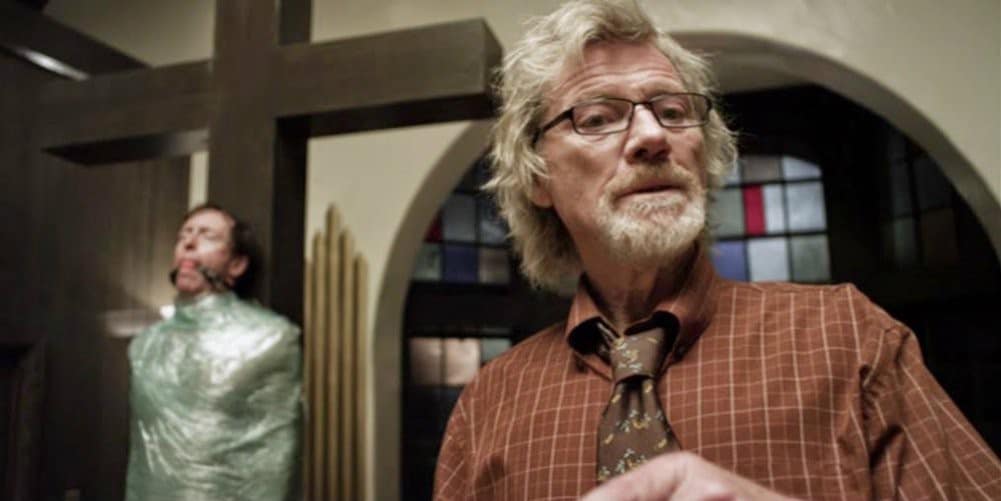
Get Out (2017)
Jordan Peele’s directorial debut, Get Out follows a black man named Chris going to meet his white girlfriend’s parents on a weekend getaway. Upon arrival, Chris notices something strange about his girlfriend’s family and their estate. Her parents seem extremely accommodating and go out of their way to assure Chris that they are not racist, but as Chris discovers more and more of the family’s disturbing secrets, he discovers that they are transplanting a white person’s consciousness into the bodies of black people to possess their desired physical characteristics. Chris must now fight to escape the estate and keep his bodily anatomy intact. Get Out is, in essence, a critique of white liberal racism. The white family portrayed in the movie pride themselves on not being racist, even going out of their way to praise black people for their accomplishments. However, this is all a façade. The white family in Get Out subscribe to the racist notion that black bodies are physically superior and wish to use them for their benefit, such as real-life white liberals using black people as tools to further their political causes. Transplanting white consciousness into black bodies itself is an allegory for black people’s strength being used for the benefit of white people, portrayed in gruesome and solemn detail.
The Monster of Climate Change
Climate change has been one of the most contentious issues of the twenty-first century. With global temperatures rising rapidly and ice caps melting at an alarming rate, raising awareness is more important than ever. These 2010s horror movies serve as a dire warning of what will become of the earth if we don’t take drastic action.
Crawl (2019)
This nature horror follows a competitive swimmer named Haley who gets an urgent phone call from her sister alerting her to a category five hurricane headed to her Florida home. Against police advice, Haley goes to check on her estranged father. As the storm rages on, Haley’s father’s home is flooding rapidly. Haley then takes her dog and stuffs herself into a crawl space for safety only to be trapped and hunted by prehistoric alligators. As climate change progresses, natural disasters – such as the hurricane portrayed in this movie – are only going to become more common. Crawl portrays the devastating effects of such natural disasters in realistic and gritty detail. The movie even invoked imagery of real natural disasters such as Hurricane Katrina. The alligators represent an ancient primal danger brought forth by our deteriorating environment; it’s an ominous warning to the viewer that, unless drastic action is taken, we too will be at the mercy of the earth’s rage.
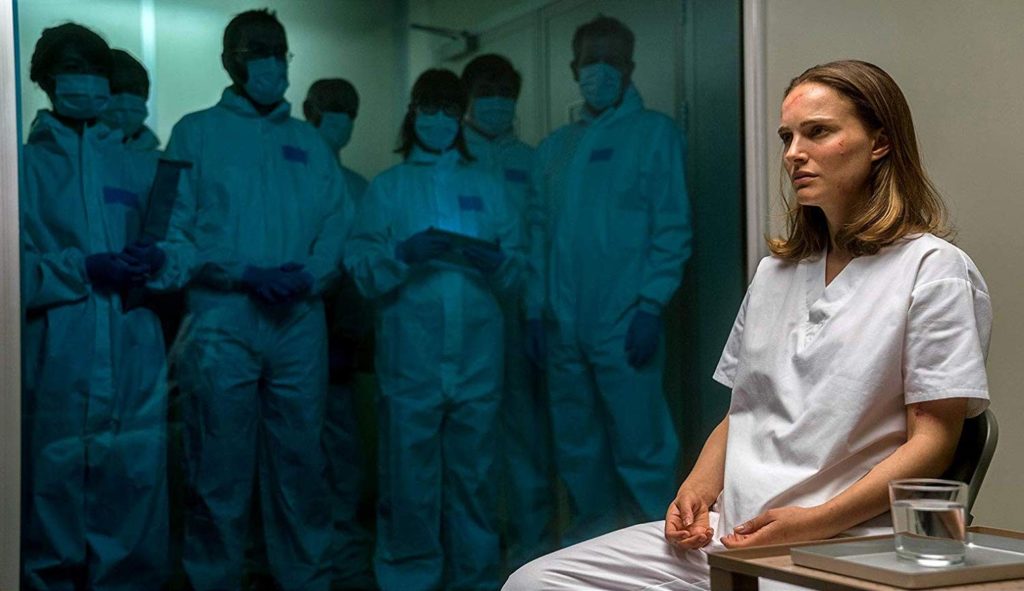
Annihilation (2018)
This psychological horror follows an army veteran and biologist named Lena. When her previously missing husband starts convulsing as soon as he reappears in her life, Lena calls an ambulance for him, only for it to be directed to a secret government facility. Lena comes to find that her husband had contracted a disease from researching a mysterious zone called “Shimmer”. Created from a fallen meteorite, Shimmer has been rapidly expanding for three years. When her husband falls into a coma, Lena decides to join a team of scientists on an expedition to study Shimmer. As they venture further, they uncover a mysterious alien fungus that mutates the body of its host until it resembles an entirely different creature. Annihilation plays heavily into the “nature takes its revenge” trope that has grown in popularity in both the eco-horror subgenre and mainstream horror in the late 2010s. Like Crawl, Annihilation shows the potentially catastrophic consequences of unchecked climate change, if in a more metaphorical way.
The Legacy of 2010s Social Horror: into the 2020s and Beyond
Now that we’re two years into the 2020s, what’s in store for the dreaded societal monster? What form will it take next? Here are a few predictions for what’s in store for the next decade.
Horror in Quarantine
In March 2020, the world was blindsided by the COVID-19 pandemic. People were confined to their homes, living in fear of the disease. COVID-19 drastically changed the world, impacting the lives of millions. This undoubtedly will have a monumental effect on the horror movies of the next decade. Like the AIDs epidemic of the 80s, we may see a boom of body invasion, possession, and involuntary transformation stories in horror, mimicking the experience of contracting the disease. The 2020 film The Host features a demonic entity processing a group of friends through Zoom, taking over their bodies and taking control of their lives just like the virus itself. We may also see a return of the classic zombie plague trope, drawing obvious parallels to the Covid-19 pandemic. The 2021 Taiwanese body horror film The Sadness follows a couple trying to survive a mysterious flu-like virus that quickly morphs into something much more sinister. Virus allegories in general are predicted to rise in popularity in the next decade.
The 2020 Election
No matter what your opinion is on the former president, there is no denying the impact time Donald Trump’s time in office has had on the media and American culture as a whole, Horror movies are no exception. The black comedy movie The Hint (released just before the 2020 election) portrays a world where political divides are so severe that both sides have no qualms about systematically murdering each other, a clear allegory for the turmoil around the election. We may see more movies addressing the deepening political divide or possibly even satires of the former president himself.
The Age of Social Media
Technology has been advancing rapidly in the past decade, particularly in the area of social media. Statistics show Gen Z spends an average of 7.3 hours a day on social media. Apps like Instagram and TikTok have become a crucial part of the lives of many young people. Much like the science gone wrong trope of the 1950s, the social media boom is rife with potential for social commentary. The 2022 movie We’re All Going to the World’s Fair follows an isolated teenage girl whose activity on social media leads to her gruesome downfall, no doubt a theme that will become more prevalent in horror movies as social media grows more popular.
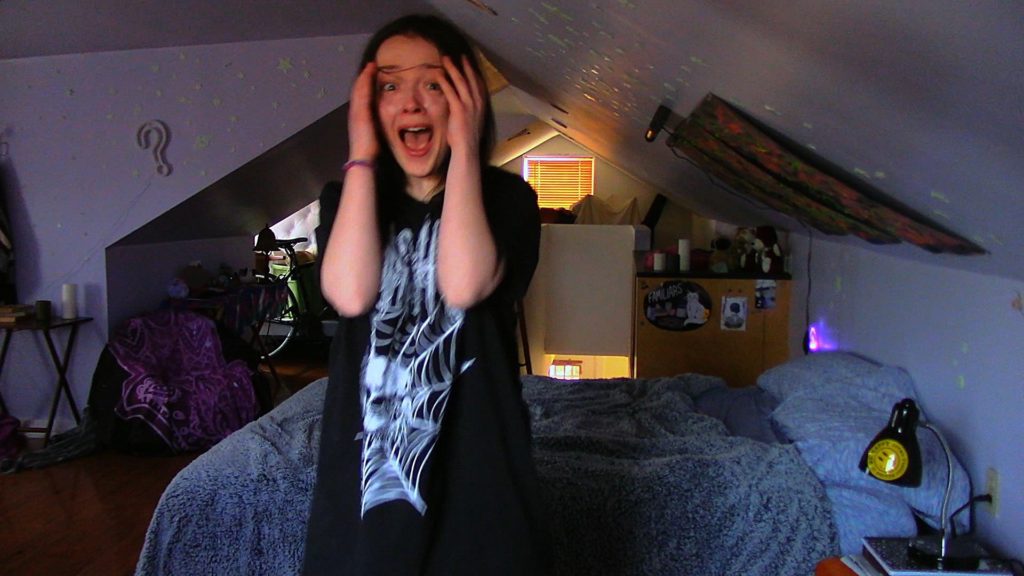
Final Thoughts
Since the beginning of the genre, horror has been a vehicle to satirise and reflect society’s fears. The 2010s is a perfect example of this. Class inequality, political divisions, and environmentalism were some of the social issues portrayed by 2010s horror movies. The influence of these movies will be felt long after the decade has ended. The horror films of the 2020s will carry on this legacy, as well as offer up fresh commentary on nuanced issues of the future.
